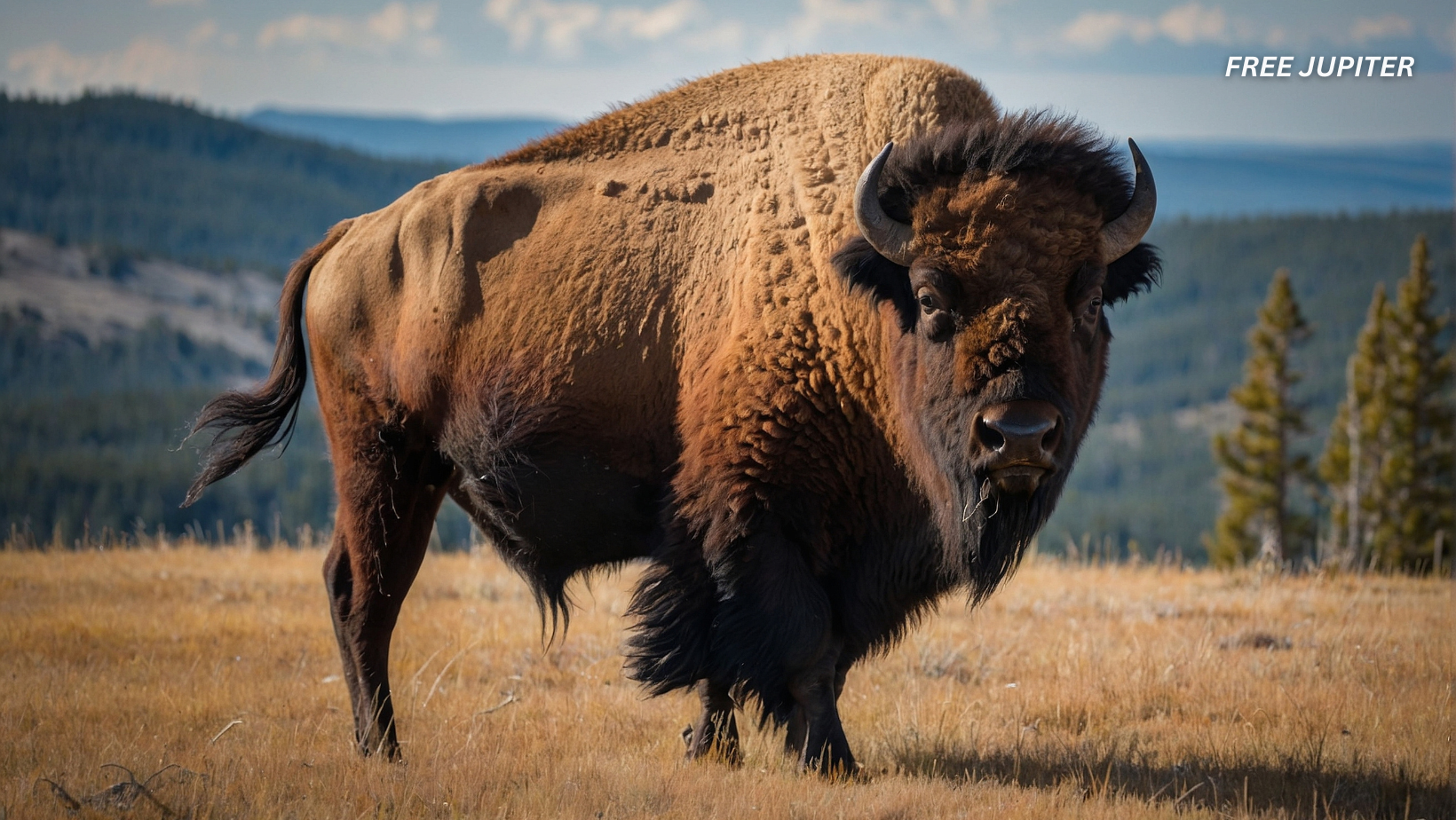On May 4, 2025, a 47-year-old visitor from Cape Coral, Florida, experienced a close encounter with one of Yellowstone National Park’s most iconic and formidable inhabitants – a bison – resulting in injury after the man ventured too near the powerful animal. The incident took place in the Lake Village area, a frequented zone within the park known for its scenic views, dining, and lodging facilities, where bison are commonly seen roaming freely. At approximately 3:15 p.m., the bison charged and gored the man, who sustained minor injuries and was promptly treated by emergency medical personnel on site.
This event marks the first recorded bison-related injury in Yellowstone for the year 2025, adding to a series of similar incidents over recent years. The National Park Service (NPS) is currently investigating the circumstances surrounding the encounter, underscoring the ongoing challenges of balancing human recreation with wildlife safety in one of America’s most treasured natural landscapes.
Yellowstone is home to a robust population of bison, numbering between 3,500 and 6,000 individuals, making it the largest public land herd in the United States. These animals, weighing up to 2,000 pounds and capable of speeds reaching 35 miles per hour, are deceptively swift and unpredictable. The NPS reminds visitors that bison have caused more injuries in the park than any other wildlife species, emphasizing the critical importance of maintaining a safe distance of at least 25 yards (23 meters) to avoid provoking these territorial creatures. Their ability to run three times faster than humans and their defensive nature make close approaches especially hazardous.
This latest incident continues a troubling pattern: in June 2024, an 83-year-old woman was seriously injured when a bison near Yellowstone Lake gored her, lifting her about a foot into the air with its horns. Earlier that year, an Idaho man faced charges after provoking a bison and being attacked, highlighting the consequences of disregarding park guidelines. In 2023, another visitor suffered severe injuries from a bison attack, reinforcing the message that respect for wildlife boundaries is essential for safety.
Yellowstone’s bison are not only symbols of the American West but also living reminders of the delicate balance required between human curiosity and wildlife preservation. Visitors are urged to observe from a respectful distance, never feed or touch the animals, and to remain vigilant to ensure both their safety and the protection of these magnificent creatures.
Read more: Cat Miraculously Survives Fall That Killed Two Florida Hikers In Utah
Understanding the Risks: Yellowstone’s Bison and Visitor Safety
Yellowstone is home to a substantial population of bison, estimated between 3,500 and 6,000 individuals. These animals are impressive in both size and speed-capable of weighing up to 2,000 pounds and running as fast as 35 miles per hour. Despite their seemingly placid appearance, bison are highly territorial and unpredictable, especially when they feel threatened.
The National Park Service (NPS) stresses that bison have caused more injuries to visitors in Yellowstone than any other animal. To protect both humans and wildlife, the NPS advises visitors to maintain a safe distance of at least 25 yards (about 23 meters) from bison and other large herbivores. For potentially more dangerous predators such as bears and wolves, a distance of 100 yards (91 meters) is recommended.
Visitors are reminded that bison can outrun humans by a factor of three, making any close approach extremely risky. The animals’ defensive instincts can trigger sudden charges, which can lead to serious injuries.
A History of Bison-Related Injuries in Yellowstone
The recent incident is not isolated. In June 2024, an 83 – year – old woman from Greenville, South Carolina, suffered severe injuries after being gored by a bison near the Storm Point Trail at Yellowstone Lake. The attack was powerful enough to lift her approximately one foot off the ground. She was airlifted to a regional medical center for further treatment following initial care by park responders.
In April 2024, another incident involved a 40 – year – old man from Idaho named Clarence Yoder, who allegedly provoked a bison by kicking it. He was subsequently attacked and faced charges including disorderly conduct, disturbing wildlife, and being under the influence of alcohol during the incident.
Going back to July 2023, a 47-year-old woman sustained serious chest and abdominal injuries after a bison attack in the park, further illustrating the dangers of close encounters with these powerful animals.
Why Respecting Wildlife Boundaries Matters
Beyond the immediate risk to visitors, inappropriate behavior such as attempting to touch or pick up bison calves can have devastating consequences for the animals themselves. Calves that are handled by humans risk being rejected by their herds, which often leads to fatal outcomes. Protective adult bison will aggressively defend their young, increasing the danger to anyone who gets too close.
Yellowstone’s safety guidelines are designed to protect both people and wildlife. Visitors are urged to observe animals quietly from a distance, never feed or approach them, and retreat calmly if an animal moves closer.
Read more: Cat Miraculously Survives Fall That Killed Two Florida Hikers In Utah
The Bigger Picture: Yellowstone’s Visitor Impact and Wildlife Safety
With nearly 4.7 million visitors recorded in 2024, Yellowstone remains one of the most visited national parks in the United States. The park’s vast wilderness and abundant wildlife draw nature enthusiasts from around the world. However, the high volume of visitors also increases the chances of hazardous wildlife encounters.
The recent spate of bison – related injuries, including the Florida man’s case, highlights the ongoing need for education and vigilance. Respecting the natural behavior and space of Yellowstone’s animals is essential to ensuring a safe and enjoyable experience for all.
Final Thoughts: A Cautionary Tale from the Wild
The incident involving the Florida visitor serves as a vivid reminder that Yellowstone’s bison, while majestic and emblematic of the American West, are wild animals with instincts that demand respect. Their size, speed, and unpredictability make close encounters dangerous, and ignoring safety guidelines can result in serious harm.
By following established rules – maintaining proper distances, observing quietly, and never provoking wildlife – visitors can enjoy the breathtaking beauty of Yellowstone while minimizing risks. These precautions help preserve the delicate balance between humans and nature in one of the world’s most treasured natural landscapes.
If you plan to visit Yellowstone or any other wildlife – rich area, remember: admiration from afar is the safest and most respectful way to experience the wild.
Read more: Which Dog Breeds Are the Smartest? These Clever Pups Made the Top of the List
Summary of Key Points:
- A Florida man was gored by a bison on May 4, 2025, near Yellowstone Lake.
- The man suffered minor injuries and was treated promptly.
- Yellowstone’s bison population ranges from 3,500 to 6,000 animals.
- Bison can weigh up to 2,000 pounds and run at speeds of 35 mph.
- Visitors should keep at least 25 yards away from bison.
- Bison cause more injuries to visitors than any other Yellowstone animal.
- Past incidents include serious injuries in 2023 and 2024.
- Respecting wildlife boundaries protects both humans and animals.
By keeping these lessons in mind, visitors can safely appreciate the wonders of Yellowstone without compromising their well – being or that of the park’s magnificent creatures.










